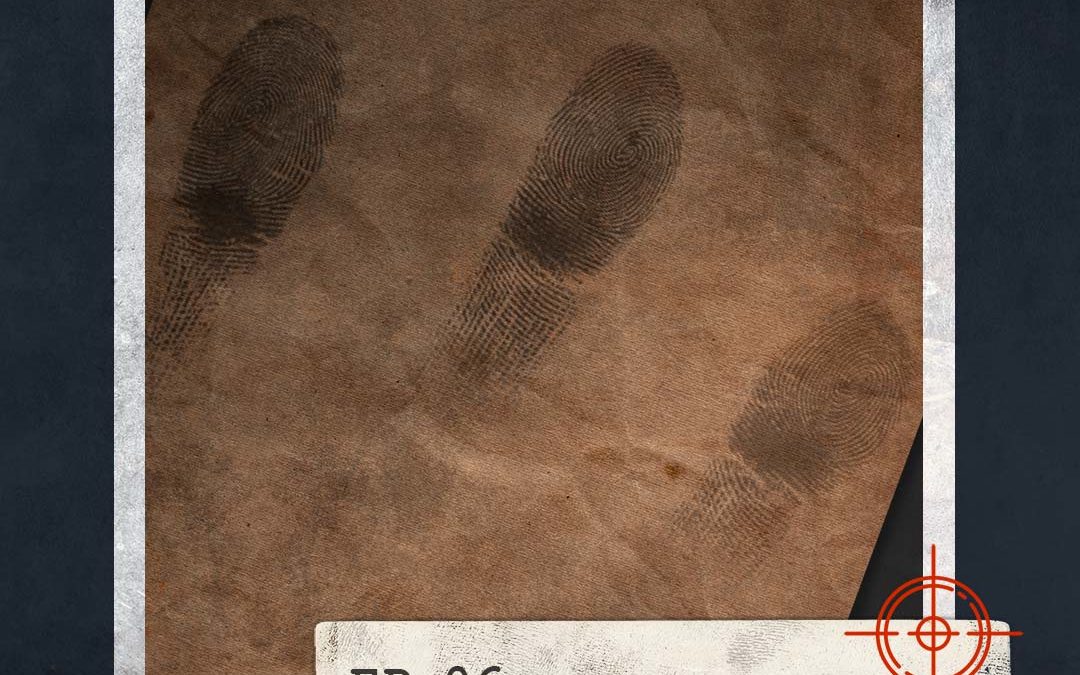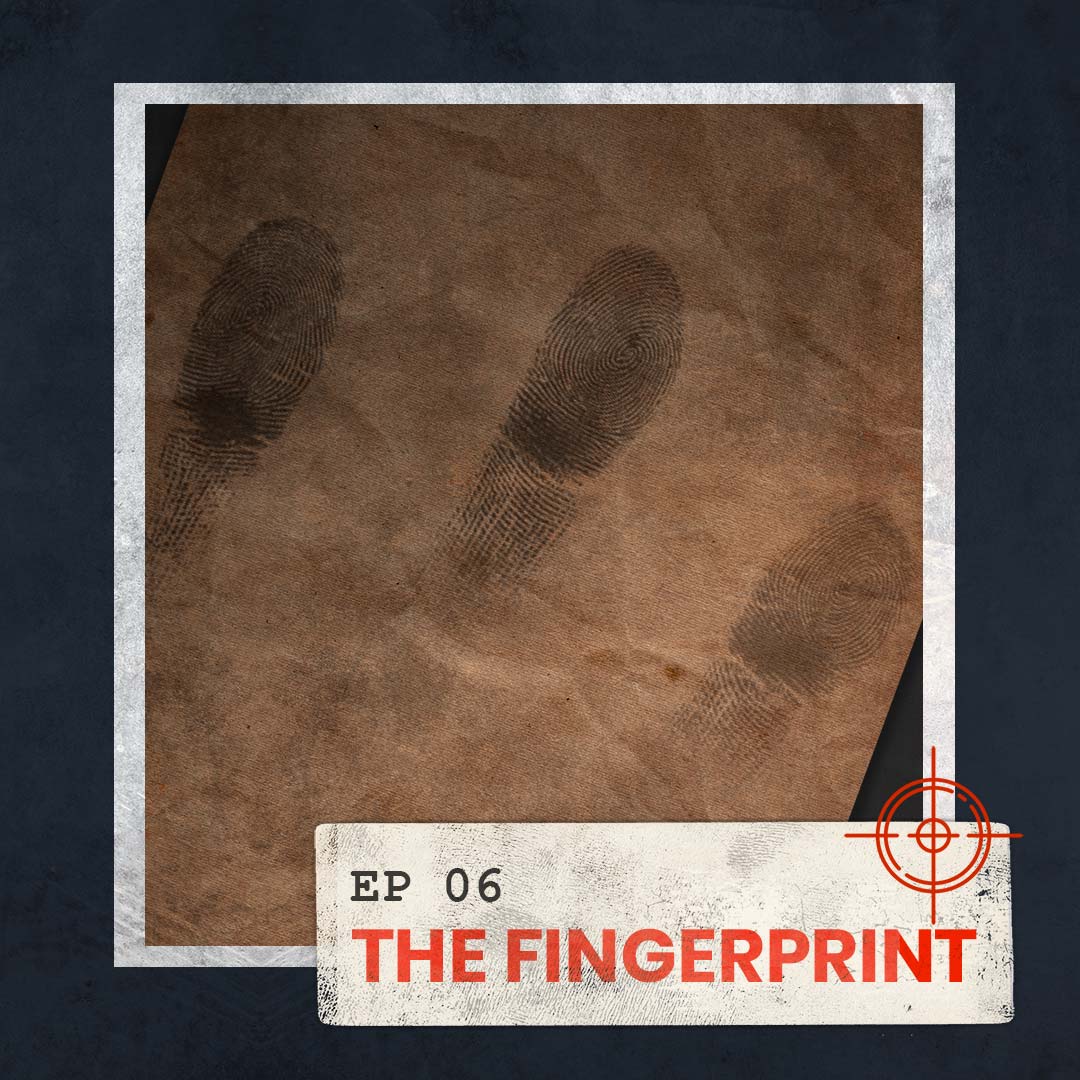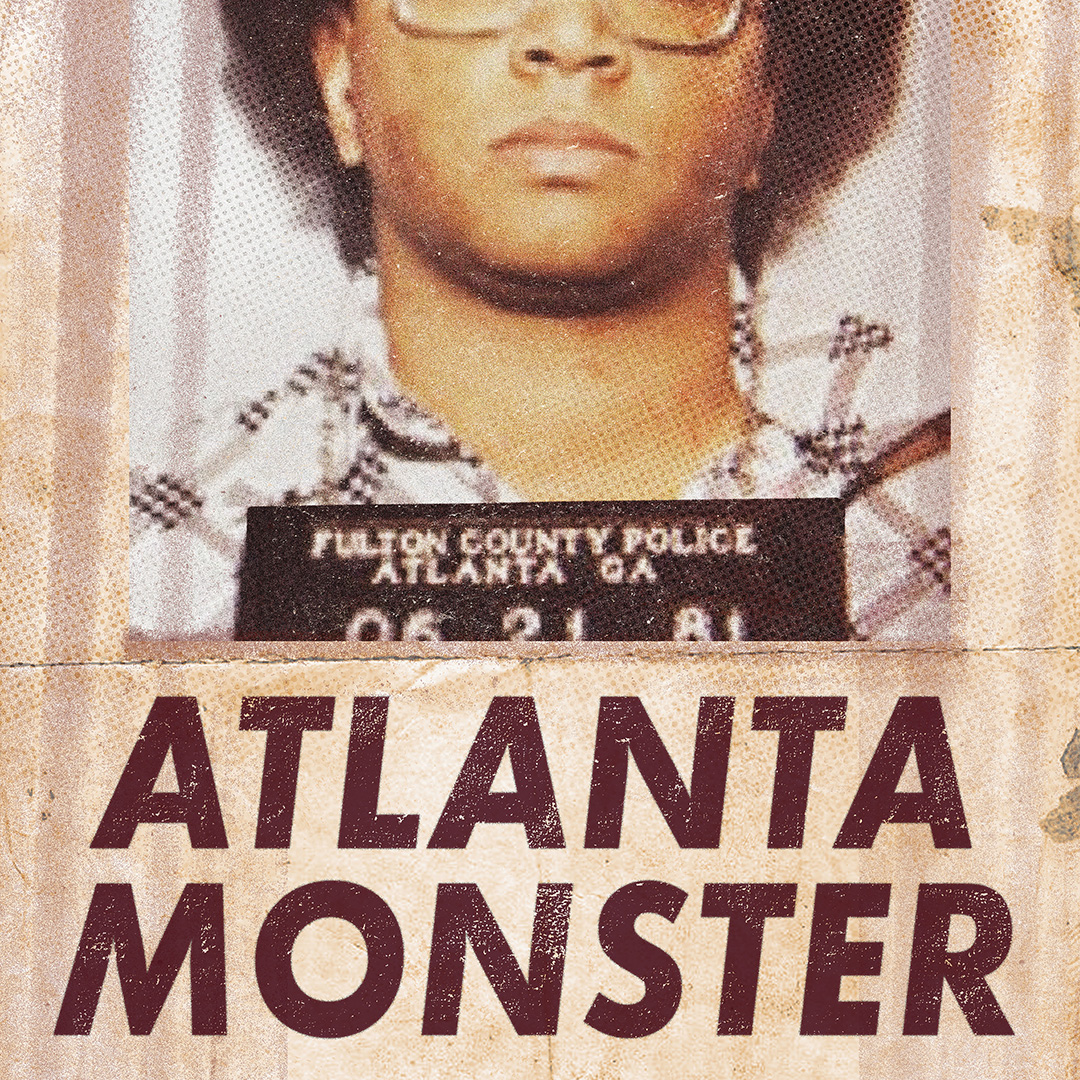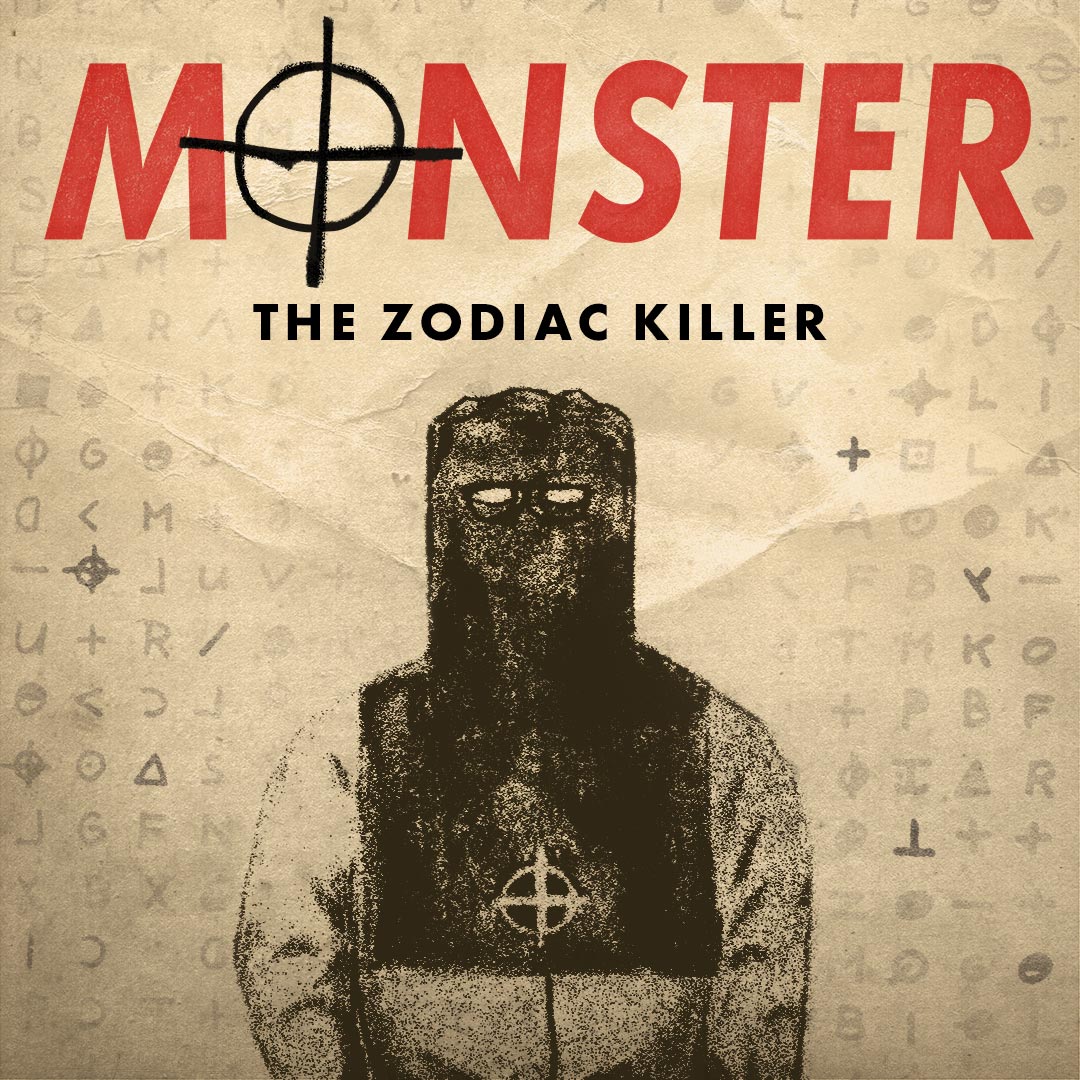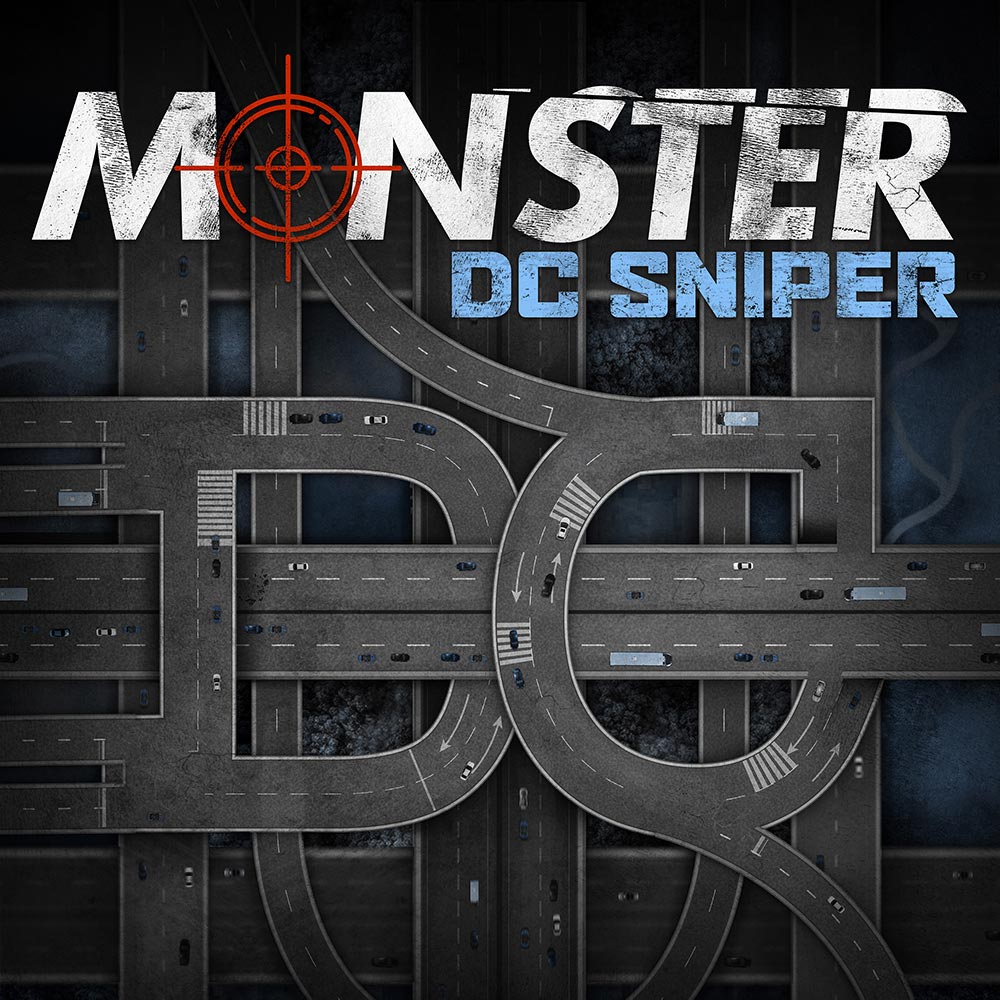6 • THE FINGERPRINT
On October 21st, authorities connect the D.C. Sniper attacks to a liquor store robbery in Alabama. And police find a fingerprint.
Transcript
Speaker 1: 00:00 Welcome to Monster: DC Sniper, a production of iHeartRadio and Tenderfoot TV. The views and opinions expressed in this podcast are solely those of the podcast author or individuals participating in the podcast, and do not represent those of iHeartMedia, Tenderfoot TV, or their employees. Listener discretion is advised.
Speaker 2: 00:24 10 days before shots were fired in Maryland, the first victims of the serial sniper may have been 800 miles south of the Washington Beltway.
Tony Harris: 00:34 September 21st, 2002. Montgomery, Alabama.
Speaker 4: 00:40 [inaudible 00:00:40].
Chief Graboys: 00:40 It all started with a call that had gone out in relation to a robbery at the liquor store.
Speaker 4: 00:46 [inaudible 00:00:46].
Chief Graboys: 00:46 My name is James Graboys. I currently am the Chief of Police at Alabama State University. At that time, I was a lieutenant with the Montgomery Police Department. I started rolling towards that area when I heard the call go out. Originally it had been reported as a robbery, so it wasn’t until I started responding to the scene that I learned that it actually was a robbery with a homicide.
Chief Graboys: 01:13 When I responded, the area really was chaotic. You have so many people running around. One individual was a security guard who had ran up to my car and started pointing down an alleyway, and started talking about the suspect running in that direction. So I basically drove down that alleyway, and that was when I actually ended up running into one of the suspects in the case. I saw a person running, as if they were running away, and I basically hollered at them, “Stop!” He actually doubles back, and then starts jumping fences.
Chief Graboys: 01:50 I get out of my car and chase the subject on foot. The problem with fences is that when somebody goes over a fence, you can’t just blindly go over the fence, because they could be waiting on the other side to ambush you. You have to at least slow down and stop and make sure you’re clear. All of that slows you down, unfortunately. It’s a residential area, so you can’t just start shooting to try to hit somebody running from you, because one of your rounds could go into a house. So, you really have to keep trying to catch up to the person.
Chief Graboys: 02:23 The guy was in great shape. He was very, very fast, and he was really getting very far ahead of me. Unfortunately, I lost sight of him, and we basically just started saturating the area, and started looking for the subject.
continue reading
Speaker 6: 02:39 There is a ruthless person on the loose.
Speaker 7: 02:42 What unnerves this community the most is the randomness of the murders. Ordinary people doing ordinary things.
Speaker 8: 02:49 They killed the five people in one day, and then went on the rampage for the next month.
Speaker 9: 02:55 It is quite a mystery. The police say they have never had a crime quite like this.
Speaker 10: 02:59 Be careful. These guys are using weapons that are going to go right straight through our bulletproof vests.
Speaker 11: 03:05 There was a white van just went by with two guys in it.
Tony Harris: 03:07 From iHeartRadio and Tenderfoot TV, this is Monster: DC Sniper. After the Ponderosa shooting, the task force was following a lead from a note they’d found in the woods. The note mentioned a call to Officer Derek Baliles. Baliles had received a strange phone call. The caller said he knew who the snipers were, and then asked Baliles to look up a liquor store robbery that took place in Montgomery, Alabama. Investigators learned that a shooting had occurred there on September 21st, 10 days before the attacks began in DC. That night, when officers arrived at the crime scene, they chased after a suspect but couldn’t catch him. Michael Myrick was the police lieutenant in charge.
Lt. M. Myrick: 03:57 I was on call, and received notice that a shooting had occurred on Zelda Road, outside of the ABC Liquor Store. The two employees were locking up the store when it was believed a robbery took place. Miss Kelly Adams was one of the cashiers, clerks. This was her job. This is how she was paying the bills and getting through life, and starting life with a new husband and a new baby. She was locking up the store for the night, and they have a little checklist on their clipboard. Miss Adams said that everything was like clockwork, and as she was closing the store, they both had to exit at the same time.
Lt. M. Myrick: 04:30 Claudine Parker was the business manager, and as they were waiting outside, Miss Adams was behind Miss Parker. Miss Parker was turning the keys in the door, and Miss Adams said she did not hear anything, but she felt like she was electrocuted. She said, “I even thought I was tazed. I just felt this flash of electricity run through me.” She was shot directly underneath the jawline, from the left side, and the projectile just caused massive tissue damage to the skin and neck underneath her jaw, and the jaw itself. The projectile most certainly proceeded through her body, and struck the window next to the door and shattered that window. She said, “Then I fell to the ground,” and then she said, “I don’t know what happened to Claudine.”
Lt. M. Myrick: 05:19 What happened, Miss Claudine Parker would have most likely seen Kelly shot. We don’t know if she went down to try to help her or anything. However, we are certain that she would have backed up and backed away from what was happening. And as she’s backing away, she’s actually behind one of the pillars of the business. She’s actually protected by that pillar. Well, as she continued to back up, she moves out of the line of sight of the pillar, and then she is shot in the shoulder blade. It caused massive damage when the bullet exploded inside her body, and she collapsed immediately. We know that Miss Parker did not crawl, did not move. She did not get up and run, because of the damage to her vertebrae the fragmentation caused. She was unable to even breathe on her own.
Lt. M. Myrick: 06:11 Later, Miss Adams looked up, and she said she saw very slender, skinny black legs. She said the person was wearing shorts, “Standing above me, pointing a gun at my head.” A small silver revolver. And Miss Adams does not remember much after that, but she said the person just left, just ran off.
Tony Harris: 06:40 Kelly Adams, the store clerk, survived the attack.
Speaker 13: 06:45 The bullet went in right here, squirted across there, and came out the front of my face.
Tony Harris: 06:50 The store manager, Claudine Parker, wasn’t as lucky.
Lt. M. Myrick: 06:55 Miss Claudine Parker was immediately taken to Jackson Hospital, which is the nearest hospital there, and she died in surgery. From what we gathered from her family, she was a very, very good athlete. She was a semipro tennis player at one point. Unfortunately, she was in her last pay period before she was going to retire and become the tennis coach at Alabama State University. She was planning on doing that the next month, before she was killed.
Lt. M. Myrick: 07:23 I felt very sorry for the families. This was a shooting that just continued to haunt them. I mean, Miss Adams has had I believe over 20 surgeries to repair just continued infections, and just continued problems that she’s had. The Parker family is always reminded that their loved one is gone.
Lt. M. Myrick: 07:47 This particular scene was atypical, in the sense that it occurred right when two police officers were on a routine patrol. They actually heard the gunshots, tried to locate where they were coming from. And then they saw the two victims and they immediately pulled the patrol car to where the two victims were on the ground. And our patrol officers saw a young black male with a medium Afro. He was behind one of the pillars of the business, rummaging, going through a purse. As they pulled into the parking lot from the traffic way, the subject looked at them from behind the pillar, and took off running. One of our officers stayed with the victims, and the second officer engaged in foot pursuit. The subject running dropped what was later determined to be an Armalite gun catalog. He pursued him, went over the fence of the gated complex, and he chased him as far as he could until he was out of sight. Then multiple units responding, trying to locate the subject that was running, but were unable to do so.
Lt. M. Myrick: 08:46 That subject then, we know later, had to have come out in a particular area. An eyewitness citizen saw the subject, this young black male, getting into the back of a Caprice. That Caprice then drove out of the area, but because the subject got into the back of the Caprice, we knew we had a driver, so we had a second subject. I was dispatched to the scene as the case agent. Most of the time, by the time the Homicide Unit is called in or members of, the scene is secured. They’re just kind of waiting for us to do our initials. We need to get into witness interviews, and we need to start locating evidence that is not just in plain sight.
Lt. M. Myrick: 09:22 One of the things that I saw when I arrived on scene was the significant, significant blood trail from where the victim was being treated. So I knew this was not just a typical shooting, just from the way the scene was.
Tony Harris: 09:37 Kelly Adams, the surviving victim, said she had seen someone standing over her with a silver revolver. But strangely, her wounds hadn’t come from a handgun.
Lt. M. Myrick: 09:48 Entirely too much tissue damage for that to be a handgun. A handgun fires a heavy bullet. It does not have a lot of horsepower, as opposed to a rifle, where your velocity is such an issue. So, when we saw the injuries to Kelly Adams’ jawline, all the massive damage underneath her neck where she was shot, a handgun projectile does not do that.
Tony Harris: 10:09 By examining the wounds and bullet fragments, investigators determined that the shots had come from a rifle. But that wasn’t the only odd thing about the case. Lieutenant Myrick says the crime just didn’t make sense as a robbery.
Lt. M. Myrick: 10:23 There was no need for this type of violence. For the night deposit in any business, point your gun, demand the property, get the property, flee the scene. So that immediately was odd to us. Also, the ABC Liquor store was a state-run liquor store, and they do not get robbed. They made a policy that they secured the night’s deposit in a safe. They did not want the employees to leave the business with any amount of cash. The bottom line to that is, the ABC Stores just did not get robbed. So, for someone to rob the employees as they closed, coupled with the fact that you were right by the interstate, we just knew that wasn’t a typical local offender. We were just trying to find any possible lead we could.
Lt. M. Myrick: 11:06 As in any case… This gets into homicide 101 here… we had a couple people turn in folks they were mad at. That always happens. You get a lot of folks who provide information that they believe is helpful. It’s just inaccurate information. And we would pursue those interviews, but they of course led us to nothing. We had no local leads at all within the first 48, 72 hours. Just nothing at all.
Tony Harris: 11:32 But what officers did have was evidence, like the Armalite gun catalog the suspect had dropped during the chase. It was a magazine full of information about rifles and firearm accessories.
Lt. M. Myrick: 11:45 We recovered 36 usable, identifiable fingerprints within the gun catalog, and we have a fingerprint on a brown paper bag from the liquor store, that is all of the same fingerprint, person. We just don’t know who it is. You run your fingerprints locally. You run your fingerprints through the state system. You run your fingerprints through a regional system. That’s just the progression. It takes four hours to get a fingerprint hit. Not something that just flashes up on the screen in seconds, as TV shows indicate. And when we did not get any hits, they ran them through the national system, and still received a negative identification, as it’s called. A negative ID.
Lt. M. Myrick: 12:22 When you start doing that, you’re generally thinking that this is someone who’s either A, never been fingerprinted, or B, is a juvenile, and the fingerprints are not in these adult systems. We thought, “Well, if that was a juvenile, this could have been somebody who just simply came in off the interstate, committed this robbery. They’re a juvenile, so they’re not in the system, and we really have a tough case. We really have something that’s going to be very difficult to solve locally.”
Tony Harris: 12:52 The case had gone cold, but soon there would be an unexpected break in both the Alabama shooting, and the DC sniper case.
Tony Harris: 13:24 A month now had passed since the Alabama shooting, and the case was still cold. Up in DC, investigators were now two and a half weeks into their hunt for the snipers, and retired Montgomery County Police Commander Drew Tracy worried they weren’t making progress fast enough.
Cdr. Drew Tracy: 13:41 My day was, I was up 3:30 in the morning. I grabbed something, probably a protein smoothie, and then I’m driving, because I have to give a briefing at 5:00 A.M. in the morning. And I remember grabbing a Washington Post, and it was talking about several serial killings, and how long it took. You know, Son of Sam, I think it took months to catch him, and he was providing information on a regular basis. Then you had the BTK Killer, and he wasn’t caught at that time. I think the Green River Killer was just caught. And I looked at the period of time it takes to catch some of these individuals, and I said, “We can’t sustain this.”
Cdr. Drew Tracy: 14:17 And it got in my head, saying, “You know, we got to push with everything we’ve got, because we don’t know how long these resources are going to last.” We had close to 400 FBI agents assisting us. ATF. We had local law enforcement. We had volunteers. We had people we were telling to stand in front of our school systems that could be victims. We had helicopter pilots. We had a lot of things going, and I know there’s a limitation to that. So, all these things are kind of taking heavy weight on the task force and people involved.
Tony Harris: 14:49 Drew Tracy was exhausted from working overtime, but motivated. Motivated to catch the snipers before resources ran out. Motivated to prevent any more senseless shootings. And motivated by a promising lead. After the task force had learned about the sniper’s call to Officer Derek Baliles, Drew Tracy was assigned to investigate that lead.
Cdr. Drew Tracy: 15:15 I actually called Montgomery, Alabama myself, and I asked if I could speak to one of the detectives involved.
Speaker 15: 15:22 Johnny Benson.
Lt. M. Myrick: 15:23 I’m sitting at the house on a Sunday afternoon, watching the Nascar races. Everybody does here. And I get a call from someone from the Sniper Task Force. One of the units within that task force had followed a lead. The would-be snipers called the Montgomery County PIO officer, and said that they did the shooting on Ann Street in Alabama.
Cdr. Drew Tracy: 15:46 So, I remember talking to the detective. I wanted to get a good feel for, were these individuals who called, are they really involved? Or is it just something to just throw us off track? Then he told me it was a robbery. So a little bit of the wind was coming out of my sails, because every one of the situations we had in Maryland, Virginia, and Washington DC was not a robbery.
Lt. M. Myrick: 16:10 What’s so intriguing to me is that they said the shooting was on Ann Street. I said, “Ann Street is the exit from which you exit the interstate. That’s the Ann Street exit.” However, at the bottom of that exit, if you turn left you’re on Zelda Road. I said, “There would be no way that someone in town would attribute that shooting to Ann Street. That was actually on Zelda Road. Everybody knows Ann Street, and everybody knows Zelda Road.”
Cdr. Drew Tracy: 16:34 I asked if there was any evidence in the case. You know, ballistics and everything else. He says, “The only thing we have is a magazine.” And I said, “A magazine? You mean magazine from a weapon?” He goes, “Like a paper magazine.” And he says… And this is where it went, clicked with me just like that. I said, “Oh my God. We might have something here.” He said it was an Armalite catalog. Well, from my training from being on SWAT, I knew what Armalite was. They produced things that you could put on your rifle. You know, Armalite, AR. They sell stuff for an AR-15, and make AR-15s. So when I heard that, we got an FBI agent from Mobile, Alabama to grab that catalog.
Lt. M. Myrick: 17:19 Special Agent Margaret Faulkner came and gathered the information from our case, some of the evidence, and transported it up to the Sniper Task Force. And Margaret Faulkner, being at the task force, she said, “Have we ran these fingerprints? Have we ran them in every known database, federal or otherwise?”
Cdr. Drew Tracy: 17:36 FBI in Washington, DC did a more thorough search, because they have access to bigger databases for fingerprints.
Lt. M. Myrick: 17:45 They ran it through every alphabet soup database that they had, and when they sat down, they said, “Well, the only one that we have not run it through is INS.” And they said, “Well, let’s run them through INS.”
Cdr. Drew Tracy: 17:55 That’s when we got a hit on a fingerprint.
Tony Harris: 17:59 The FBI had found a match for the fingerprints from the Alabama crime scene unexpectedly, in a database run by the Immigration and Naturalization Service, or INS.
Agt. L. Hooper: 18:15 And that print was for Lee Boyd Malvo, and he was 17 years old. This is Linda Hooper. I was a Supervisory Special Agent of the FBI at the time of the sniper investigation. And so, I asked the fingerprint lab, “Did you run that print for driver’s licenses?” I figured 17, the guy probably has a driver’s license. He said, “Yeah, we ran them in every state. He doesn’t have a driver’s license.” The only thing we could come up with was that he was referenced in an INS file out of Tacoma, Washington. Well, as soon as we found out that his name was referenced in INS files, we went to INS, and we had them pull the file so we could see what was in it.
Tony Harris: 18:59 It turned out that Lee Boyd Malvo, the 17-year-old whose fingerprints had been found on the gun catalog in Alabama, was originally from Jamaica. Malvo had been fingerprinted in Washington State in December 2001, when he and his mother, Una James, were arrested. Lee Boyd Malvo had been staying at a homeless shelter with a 40-year-old man named John Muhammad. Police were called when Malvo’s mother, Una James, got into an argument with John. She had showed up at the shelter and said John had kidnapped her son. Because Muhammad was not related to Malvo, police returned him to Una.
Tony Harris: 19:41 However, when neither Una or Lee Boyd Malvo could provide any sort of identification, police contacted border patrol, and the mother and son were arrested on suspicion of having entered the country illegally. Now, 10 months later, the fingerprints from Malvo’s arrest in Washington State matched the ones from the Alabama crime scene. Here’s retired Montgomery police lieutenant Michael Myrick again.
Lt. M. Myrick: 20:08 How did Lee Malvo, from an INS arrest in Tacoma, Washington, connect to a shooting in Montgomery, Alabama with a rifle, off of the Beltway, which is what they have in DC? You know, how is all that happening? We have a lead. We can at least solve one case in Alabama from this information. Is that going to be connected to the sniper shooting? I’ve got no idea if that’s the situation at all. Well, at the same time, a man in Tacoma, Washington called the task force, and he said that he had had a friend that had left the area, that was a very militant person, very upset with his domestic situation. He says the guy was very dangerous. He described him as just being very, very unhappy with life, and he said, “It just bothers me that all this is happening. My friend’s ex-wife lives in the DC area. His name is John Muhammad.”
Tony Harris: 21:04 The tip was about a man named John Muhammad, the same as the man involved in the custody dispute over Lee Boyd Malvo, and the tipster had called from Washington State, where Lee Boyd Malvo was arrested.
Lt. M. Myrick: 21:18 He says, “Nothing for nothing, but I just want to let y’all know. Don’t want to sit on this information.” And he said, “He left with a AR-15 Bushmaster rifle.”
Cdr. Drew Tracy: 21:29 And he mentions how it was extremely important to John Muhammad to get a silencer for a AR-style weapon, and that he had a young man with him that he called Sniper.
Lt. M. Myrick: 21:43 He said they talked about snipers, and they played sniper games. He said, “You know, I just want to pass this information on.” Well, now we had a very, very clear suspect to pursue by name.
Tony Harris: 22:08 Investigators now had two strong suspects, Lee Boyd Malvo and John Muhammad. In Malvo’s case, the letter the snipers left outside the Ponderosa had led investigators to Derek Baliles, who in turn directed them to the Alabama shooting, and fingerprints from that crime scene matched Lee Boyd Malvo. They had come across John Muhammad’s name from two different directions. The INS report connected Muhammad to Malvo, and then his name came up again on a tip line call. Drew Tracy was a trained sniper himself, so he wasn’t surprised that there could be two suspects working together.
Cdr. Drew Tracy: 22:48 Back in 1983, I first became involved as a SWAT team member. One of the most important pieces of the training, and a vital part, was going to sniper observer school. It’s two words. It’s sniper and observer. So, you’re trained as a marksman, and you’re also trained as an observer. Your main job being a sniper observer is observing. You had to put yourself in a position you’re not seen. You have to utilize a different type of optics, and you have to provide good, steady and specific information to your team.
Cdr. Drew Tracy: 23:22 The reasoning for a team aspect in deployment is you can’t constantly be behind the optics of a gun for an extended period of time, so you wanted to have two trained people that would exchange positions. One could be the observer while the other one sets up their rifle, so that they’re ready to take a shot.
Tony Harris: 23:40 So, it could make sense for there to be two perpetrators working together, with one acting as the sniper, and the other observing, picking targets, and letting the sniper know when there weren’t any witnesses nearby. The tip line caller had also said that John Muhammad owned a Bushmaster rifle, an AR-style rifle that fires .223 rounds, the same type of bullets used in the Alabama and DC shootings.
Cdr. Drew Tracy: 24:06 A Bushmaster XM15E2S is basically an assault rifle. It’s a high velocity round, 3,200 feet per second. So, it has the capability of being pretty consistent within 300 yards. I went to basically every scene in the Washington, DC area, and I think the longest one was about 130 yards. Utilizing the sight system, with training, these shots are I wouldn’t say easy, but they’re capable, with that weapon and a small amount of training.
Tony Harris: 24:42 And the AR-15 style assault rifle that John Muhammad was reported to have was capable of much more than firing single shots at a long range. It’s a semiautomatic rifle that can fire up to 45 rounds a minute.
Cdr. Drew Tracy: 24:57 If you look at the latest active shooter situations in our country, you’ll see an AR-15 as being the weapon of choice. It has the capability of doing great damage. Law enforcement also carries an AR for patrol nowadays, but it’s interesting. Many law enforcement departments in this country switched over to a rifle program because of October 2002, the DC Sniper incident. And if you think about it, if you’re a patrol with a limited shotgun or a handgun, you’re not going to have the capability to go against a rifle threat.
Cdr. Drew Tracy: 25:32 One of the things that kind of scared me… Each one of these situations was one shot. There wasn’t a second shot. It was one shot. Which led me to believe it was military training, so that greatly concerned me. If you think about it, one shot. What is that showing? One shot is telling me that they’re in control, and that scared us, and it scared me.
Tony Harris: 26:04 Who were John Muhammad and Lee Boyd Malvo, and how was this 40-year-old American connected to a 17-year-old Jamaican boy? Investigators needed to find out as much about them as possible. And if they were the snipers, investigators needed to find them fast, before they killed again. Here’s former FBI Agent Linda Hooper again.
Agt. L. Hooper: 26:32 So, we were putting together a lot of information on these two individuals. It certainly looked like they were two viable suspects in this case, but we had no information that they were in Maryland, Virginia, or Washington, DC area at all. Well, when we were investigating John Muhammad, we discovered that he was divorced, and his wife, she had a restraining order against him. I found out that she was living in the area, and so I sent two people over to interview her.
Mildred M.: 27:09 Me and my children were having dinner, and FBI knock on my door. They said, “So, when was the last time you’ve seen John Allen Muhammad?” And my palms began sweating. I am Mildred Muhammad. I’m an award-winning global keynote speaker, and my former husband was John Allen Muhammad, whom you all know to be the DC Sniper.
Tony Harris: 27:48 Next time on Monster: DC Sniper, we’ll explore the backstories of John Muhammad and Lee Boyd Malvo.
Mildred M.: 27:56 Everybody loved John, because he was jovial. He was that guy. He would be gone. She had a list of where he was supposed to go for the day, and then she started getting phone calls of him not being there.
Speaker 18: 28:10 I misread his character, you know? He has a good side and a bad side.
Mildred M.: 28:15 He was accused of trying to kill other soldiers.
Speaker 18: 28:21 You know, I think that they kept a lot of this stuff here.
Mildred M.: 28:25 He was going to kill me, and it was going to be a head shot. And I could not get anybody to believe me.
Speaker 1: 28:42 Monster: DC Sniper is a 15 episode podcast hosted by Tony Harris, and produced by iHeartRadio and Tenderfoot TV. Matt Frederick and Alex Williams are executive producers on behalf of iHeartRadio, alongside producers Trevor Young, Ben [Kebrick 00:28:58], and Josh Thane. Payne Lindsey and Donald Albright are executive producers on behalf of Tenderfoot TV, alongside producers Meredith Stedman and Christina Dana. Original music is by Makeup and Vanity Set. If you haven’t already, be sure to check out the first two seasons, Atlanta Monster and Monster: The Zodiac Killer. If you have questions or comments, email us at monster@iheartmedia.com, or you can call us at 1-833-285-6667. Thanks for listening.

